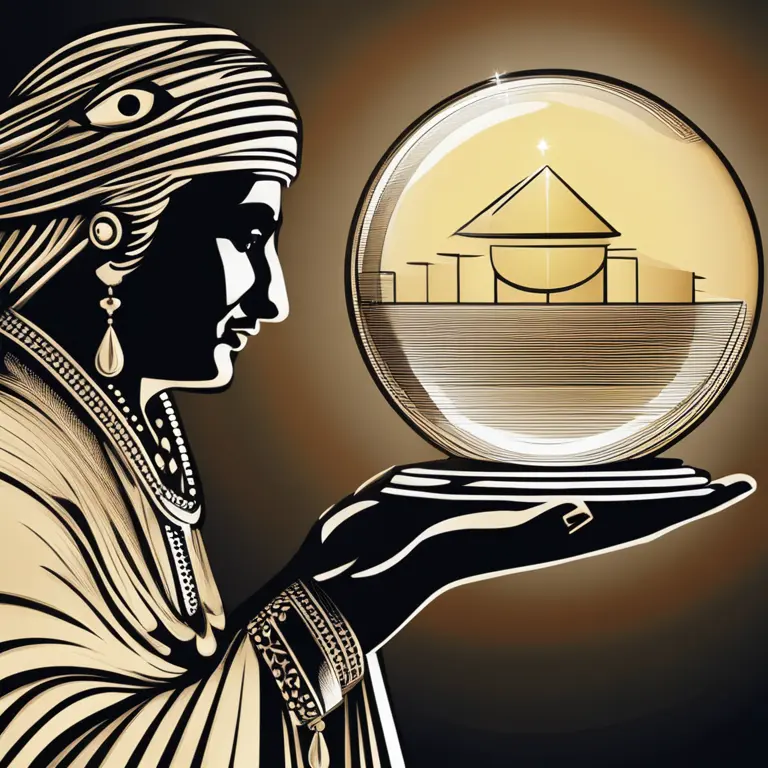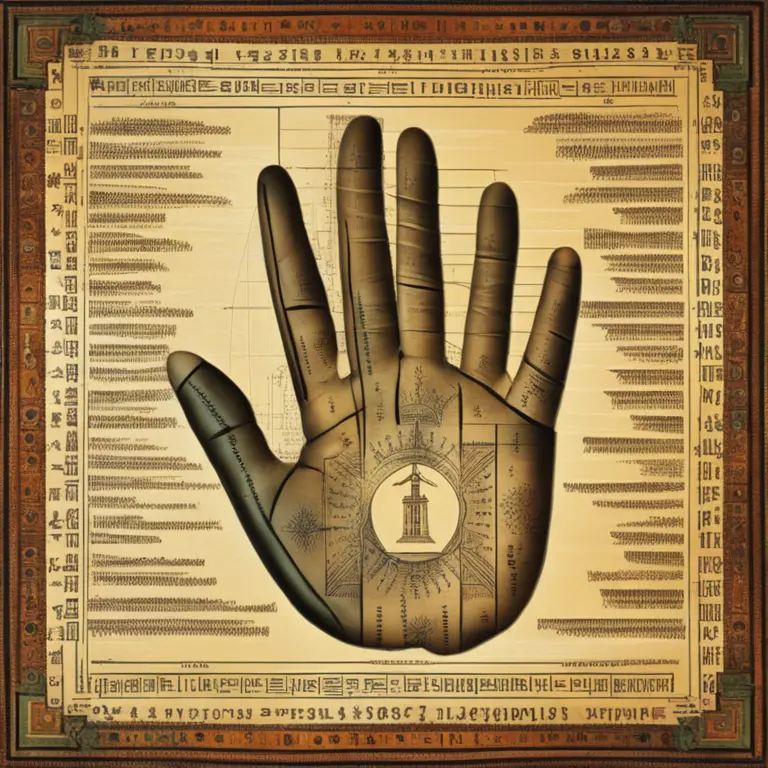
The Genesis of Palmistry
Discover the intriguing evolution of palmistry from ancient roots to modern practice, tracing the art's journey across cultures and time.
article by Nora Pennington
The Dawn of Palmistry
Palmistry's roots can be traced back to ancient civilizations, where it held a place among respected divinatory arts. Originally linked to astrology and other esoteric sciences, palmistry, also known as chiromancy, crosses the boundaries of cultures and historic periods. The earliest evidence suggests that palmistry was practiced in ancient India, and is thought to have spread from there to other regions such as China, Tibet, Persia, Egypt, and Greece. As a treasured knowledge, it was preserved by priests and scholars who believed the hand to be a reflection of the cosmos.

Cultural Expansion and Influence
The respected art expanded significantly through time, absorbing cultural nuances along the way. As the practice journeyed westward, influential Greek figures such as Aristotle took notice, and his writings on the subject reportedly influenced Alexander the Great, who purportedly scrutinized the palms of his officers. In the Middle Ages, the Church suppressed palmistry, associating it with witchcraft, yet it survived, often practiced by Romani people, who played a significant role in its preservation and propagation throughout Europe.

The Renaissance Revival
In the Renaissance, palmistry re-emerged as both an art and a science. This period saw the birth of a more systematic approach to palm reading, with practitioners starting to categorize hand shapes and lines. Scholars like Johann Hartlieb and Paracelsus revived its intellectual standing, viewing it as a branch of natural philosophy. During this time, books on chiromancy began to appear, delving into complex interpretive systems that linked one's hand with their character and destiny.

Modern Palmistry's Flourishment
The 19th and 20th centuries heralded a newfound curiosity in the occult, bringing palmistry to mainstream audiences. Icons such as Cheiro, or William John Warner, became celebrities in their own right, providing readings for some of the most influential individuals of their era. Cheiro's publications and global lectures helped cement palmistry's popularity in the West. The integration of scientific methods, such as psychology and physiology, also lent the practice greater credibility.

Palmistry in the Digital Age
As we advance into 2024, palmistry adapts to the digital realm. Online platforms now offer virtual readings, and AI technology has expanded the accessibility of palm analysis. However, despite technological advancements, the fundamental principles remain rooted in the interpretation of lines, mounts, and shapes of the hands and fingers, elements steeped in tradition that continue to fascinate both skeptics and believers.
The Continuous Evolution of Interpretation
Palmistry's narrative is a vibrant canvas, constantly reinterpreted by those who practice it. Today, there are countless schools and philosophies, some adhering closely to traditional methods, while others integrate holistic approaches, psychological insights, and cross-cultural perspectives. As an enduring form of expression and self-reflection, palmistry remains a testament to the human desire to seek understanding of oneself and one's place in the grand tapestry of life.
Published: 1/11/2024
Modified: 1/12/2024
More predictions
Come back here soon to learn more about yourself and your future


The Possibility of Palmistry in Cancer Detection
Examining the claims that palmistry holds any potential in identifying the risk of cancer: a deep dive into the world of mysticism and medicine.


The Efficacy of Palmistry: Real Insight or Fancy?
Delve into the validity of palmistry as a form of divination. Is there a truth behind the lines on our palms, or is it just a charming fancy?


The Ancient Art of Vedic Palmistry
Discover the ancient art of Vedic Palmistry and its practice in the modern era, revealing the secrets held within the lines of the hand.